Recently, while researching documents to use as part of a document display, I chanced upon a file relating to a murder which had occurred in the 1930s, very close to my childhood home. Idle curiosity led me to order the document and have a look at it.
There among the neatly-typed police reports and statements I was greatly surprised to find a letter penned by one of the greats of twentieth century detective fiction – Dorothy L Sayers – who had found herself drawn into the case by a bizarre and unexpected telephone call.
A very odd invitation
At a quarter past five on the evening of 15 December 1937, Sayers received a call at her London home from Dr John Dancy. A complete stranger to her, he explained that his wife had recently been murdered and asked if she would like to come and visit the scene of the crime. His motive was apparently purely altruistic – offering an author of detective fiction the opportunity to view a real crime scene first-hand and to learn details of the investigation procedure that could be of use to her in her novels.
At the time, Sayers was one of the best-known authors of crime fiction, a genre hugely popular in the early decades of the twentieth century. She was evidently baffled by the bizarre telephone call; and after putting the doctor off with a polite deferral, she made contact with her acquaintance Sir Norman Kendal. As Assistant Commissioner (Crime) he held one of the highest ranks within the Metropolitan Police, and she asked for his advice on how to proceed.
- Memorandum to Sir Norman Kendal reporting that Sayers wished to speak to him, MEPO 3/1724
- A page from Sayers’ memorandum of her conversation with Dr Dancy, Catalogue reference MEPO 3/1724
- Sayers’ signature from her letter to Sir Norman, Catalogue reference: MEPO 3/1724
The Detection Club
Sayers and Sir Norman were both members of The Detection Club, an association whose membership principally consisted of writers of crime and detective fiction. Sayers was a founding member and later served as club president for several years, while Sir Norman had been a member since 1935.
The club’s theatrical initiation rite, in which new members swore an oath with one hand placed on a skull (affectionately known as Eric) exhorted new members to create in their books crimes that did not rely on ‘…Divine Revelation, Feminine Intuition, Mumbo-Jumbo, Jiggery-Pokery, Coincidence or Act of God…’ in order to be solved.
Sayers, a former advertising copywriter, is said to have written the oath herself. Members collaborated on round-robin crime stories in which each wrote a chapter, and which were produced both in print and for BBC radio broadcasts. They also shared their thoughts and theories on real-life crimes and murders – presumably Sir Norman would have had much to contribute to these conversations.
The phone call from Dr Dancy obviously perturbed Sayers enough for her to seek Sir Norman’s advice. She sent him a letter enclosing a six-page handwritten memo (she apologises for it not being typed due to her not having a typewriter in town) recounting to the best of her ability the entire 15-minute conversation she had with the doctor.
A gruesome crime
The crime itself was a particularly bloody one. In the early hours of 23 November, Dr Naomi Dancy had been murdered at her home in Richmond, shot at close range through each eye as she slept. The killer – her brother Maurice Tribe – had then attempted to shoot Naomi’s husband Dr John Dancy. Afterwards he locked himself in the lavatory and cut his own throat. The verdict of the inquest had been one of murder and suicide, with the surviving doctor considered extremely lucky to have escaped becoming an additional victim.
Maurice, a chronic alcoholic who had been terribly injured in the war, had been brought to the Dancy’s house to recover from a recent drinking binge. While there he had apparently discovered he had been left out of new insurance policies the couple had drawn up – this was said to have prompted his murderous frenzy.
- Illustration from the post mortem of Dr Naomi Dancy showing location of bullet holes, MEPO 3/1724
- Illustration from the post mortem of Maurice Tribe showing injuries to throat, MEPO 3/1724
A damaged man
Despite his promising start Maurice, like so many of his generation, had been terribly and irrevocably damaged by the Great War. A severe head wound in 1916 led to his losing an eye and left him with shrapnel embedded near the brain that could not be safely removed. He had married and separated in the intervening years, as the trauma of his injuries led him to rely more and more heavily on alcohol and drugs.
By the age of 43 his health was ravaged and he was losing the sight in his remaining eye. Statements from Tribe’s estranged wife and her sister agreed that he was deeply troubled and engaged in frequent bouts of heavy drinking – he still owned his service pistol and had spoken frequently of ending his own life. After the crime, bottles of methylated spirits and cocaine hydrochlor (a powerful anaesthetic) were found in his room.
A touching tribute was published in The Daily Telegraph the week after his death by a friend who acknowledged the change in him over the years since his injury;
‘In character of habit, in violence of speech and conduct he showed persistent deterioration. Who that has not been wounded to the edge of the brain can judge him?’
It would seem there was little doubt among those who knew him that he had indeed committed this terrible crime.
A moment of rage or premeditated plan?
The investigating police officers, too, seem to have had very few doubts that the crime was a clear-cut case of a damaged man who snapped.
The Doctor’s own explanation to Sayers is, however, far from clear – instead of the straightforward motive put forward by the police he claimed that Maurice had instead long planned the murders of both his sister and brother-in-law, as well as his own death, in order to benefit from an insurance policy (he does not elaborate on who was to cash in on this).
Dancy went into copious detail during his call to Sayers, rattling off the reasons for the crime as well as evidence demonstrating that he himself was innocent. However, his convoluted explanation seemed to raise suspicions in Sayers rather than allay them, prompting her to contact Sir Norman.
Murder-suicide… or double murder?
Sayers was not the only one whose suspicions were aroused – the file contains two anonymous letters received by the police asking them to investigate Dr John Dancy in the deaths. One of them states:
‘Believe me I am not the only person over here who thinks he murdered his wife & brother-in-law himself.’
Seemingly suspicious details do indeed jump out from the statements provided. The doctor washed the hands of the dead man before the ambulance arrived, and the cut-throat razor was purchased by him (Maurice could not use it due to his missing eye). There were many other small but intriguing details; however, ultimately none of these seem to have provided anything tangible enough for the police to treat as credible.
Strangely, one of the ‘suspicious incidents’ listed by the police is the presence of photographs of nude women found in Maurice’s room: Dr Dancy admitted that he had procured these for him. However, the reason why these would indicate guilt is unclear – perhaps they were just meant to show a moral deficiency on the part of one or both men.
Also found in Maurice’s room was a copy of a detective thriller that Dr Dancy refers to as ‘trashy stuff’ – a tad ironic, considering his overtures towards Sayers only weeks later.
A closed case
It is certainly bizarre to think that, barely three weeks after the horrific murder of his wife of many year, Dr Dancy would be cheerfully extending an invitation to a crime writer to come and have a poke around the scene of the crime. Strange indeed, but not necessarily indicative of anything more sinister than a lack of appropriate social mores. His attempts to persuade a reluctant Sayers – ‘I’ll just give you a few more details now, to whet your appetite’ – come across as odd and rather distasteful considering the circumstances. However, it is possible that Dr Dancy, aware of the suspicions being levelled against him, contacted Sayers in a misguided attempt to show that he had nothing to hide, and was willing to let an expert in to examine the scene in order to prove his innocence.
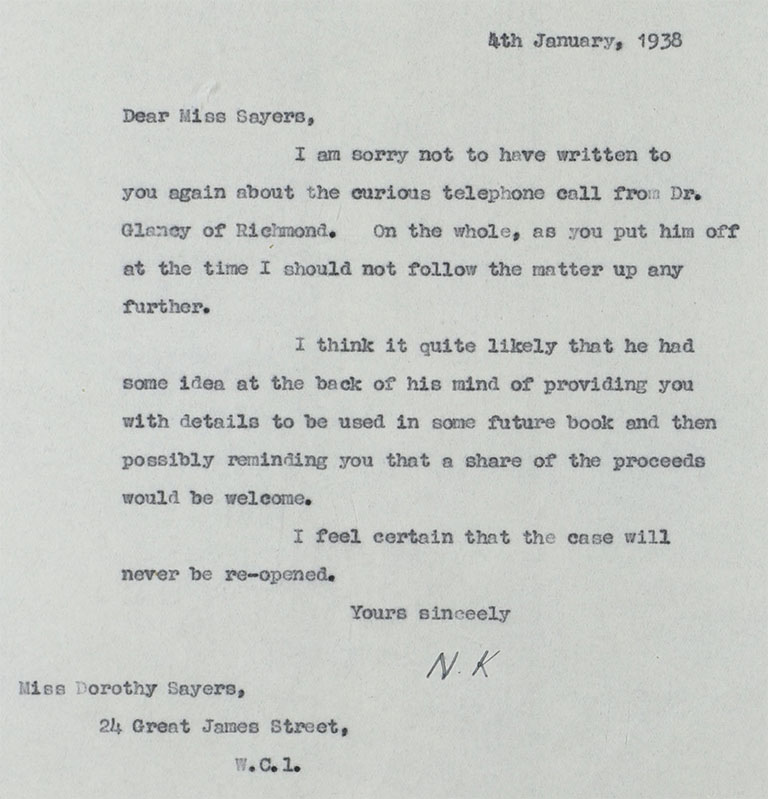
‘ I feel certain that the case will never be re-opened.’ Sir Norman Kendal’s response to Sayers, MEPO 3/1724
Ultimately the police felt they had made the right decision, and Sir Norman’s (eventual) advice to Sayers was to leave the whole thing as it stood, as he felt the doctor’s reasons for contacting the famous writer were likely mercenary in nature.
As far as the police were concerned the case was closed: despite the suspicions surrounding the case, they were confident that the correct conclusion had been drawn. We do not know how well Dr Dancy’s reputation recovered from the case as it is acknowledged that, even with strong proof to the contrary, ‘it is possible that unfair rumours against the surviving doctor will persist notwithstanding’.

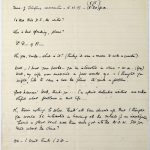
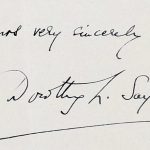
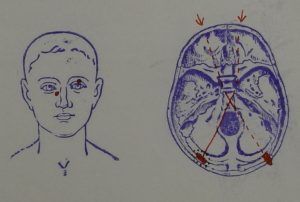
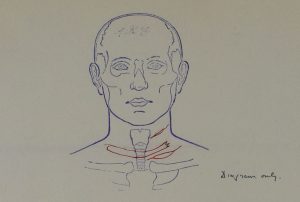

This is a truly fascinating story and questions certainly arise about Dancy’s motives in making such a weird call. Was he hoping to suppress local gossip that the police had got it wrong? Kendal is to this day the only non-writer to have been elected to membership of the Detection Club, which continues to flourish. He was clearly as intrigued by fictional crime as Club members were in the real thing and Sayers and others inscribed copies of their novels to him.
The Doctors Dancy were my grand parents and I can state that the police investigation came to the correct conclusion: Maurice killed Naomi and then himself. Maurice did attempt to murder John (called Jack) but Jack was able to turn the light switch off and duck as Maurice fired a gun at him. There were three children left motherless and any implication that Jack (a healer) would or could have harmed his wife is absurd. My grand father was highly regarded in his community and dearly loved by his patients, family, and friends throughout his long life. In today’s terms, Jack was a “true crime buff” and may well have contacted a crime writer in order to have the story of the murder of his wife told accurately to protect the children from inaccuracies and innuendo about their mother’s horrific fate.
Dr Dancy was my family doctor when I was a child growing up in Richmond. He was a wonderful man, a brilliant doctor who gave his patients the most expert care. He was kind caring and a much loved and hugely respected member of the community.
I too knew Dr Dancy well. My mother worked for him as general factotum from some time in the 1950s. He used to come for lunch every Sunday and he told amazing stories. Whether they were true or his fabrications I have no idea. Mum looked after him when he was ill and lived in Bournemouth with him when he retired until his death. I only learnt of the murder after his death and I have subsequently read various newspaper reports of the case, which are contradictory. The “foxing” so as not to be shot sounds typical of his stories. The first report said he arrived home after both victims had been taken by ambulance – then another report that he’d found them in her bedroom – the inquest report had his story of fooling Tribe and then finding him in the bathroom. He was a gentle person and I think adored my mother, although they lived as father and daughter. His daughter thinks they should have married heigh, he thought about it and decided it would mean my father would stop her alimony or otherwise make life difficult. Hard to know what to believe and what not. He’d have told Sayers a good story his motive probably to cheer himself up.
Interesting account and also follow up by relatives and former patients.
I do think that calling this following tribute “touching” is deeply offensive. It is really high time that sympathy with men who murder women is no longer acceptable. It happens time and time again – right up to the present, and it must end.
‘In character of habit, in violence of speech and conduct he showed persistent deterioration. Who that has not been wounded to the edge of the brain can judge him?’
Very interesting blog. The Detective Club archives / or some of them are held at Gladstone’s Library in North Wales: https://www.gladstoneslibrary.org/news/volume/the-british-crime-writing-archive-at-gladstones-library
I think it is possible to sympathise with a criminal as a human being whilst utterly condemning their actions. Tribe had acted bravely in the war and won an MC. He was also active in good causes afterwards and was clearly an intelligent man and those who knew him spoke well of him. He had no previous record of crime. On the other hand he committed a despicable and cowardly crime for which there can be no excuse, though his mental state may go much in explaining this. Sympathy for Naomi, who was clearly a very good woman and a dedicated doctor/educationalist, must be paramount but there should also be some sympathy for her brother, who in a way was a long term war casualty. One can only speculate if she would have been more forgiving that some. I have studied this crime and published my findings in a chapter in a book and am about to be interviewed for a podcast on it. The recollections about Dr J.H. Dancy are very interesting and not hitherto known to me.
The comment above from Rosie Burgess is as accurate a description of John as I have ever read. Ms. Burgess’ Mom was very much loved by Grandpa as well as the rest of our family. Years after John (Grandpa) died, we had the pleasure of a visit from Ms. Burgess’ Mom. She and my Mom were very close and had a deep love for each other and a relationship more like sisters with shared memories of Grandpa. Ms. Burgess’ Mom was my beloved Aunt and we were all very happy she joined our family.
Who had the best Motive and who would benefit , and what was the reason .
I have just found this blog.
I live in a flat in the house next door to Dr .Dancy and was taken to see him when he acted a a locus for Dr. Swann (father of Donald Swann). I was given a different version of events as a child and so am pleased to have learned the truth.
Ann (nee Donovan)
Did Mary Garston’s father also die in the same house and also how much money was left by him to Mary? I think it very strange that 2 wives, one brother-in-law and one father-in-law all die in the same house in what I imagine is around a 5 year period? The Garston family would do well to exhume both Mary and her father for autopsies and toxicology. This Dr Dancy chap may well prove to have been a serial killer…. However, I imagine proving this very much lies in the Garston’s family’s hands.
According to the 1939 Census, Dr. Dancy’s neighbour, Elizabeth McMurray, was in the house with him. In 1944, she had died, still his neighbour.
Points below raised by Laura Richards, Jackie Melton, and Sam Robins, all brilliant detectives and crime analysts, on Laura’s podcast ‘Crime Analyst’.
Dr. Dancy’s call to the police after the nurses of his wife was at 01.37 a.m.. The coroner’s report mentions that the deaths of Dr. Naomi Dancy and Maurice Tribe, took place around 12.30 a.m. Why did Dr. Dancy take 1 hour and 37 minutes to call the police and ambulance? What was he doing for an hour and seven minutes? The first thing you would do in this case, would be to ring the police and shout for help?
Dr. Dancy’s statement to police is 4 pages long. The first 75% of his statement is framing Maurice Tribe, only a small portion of his statement discusses the murder.
The police dismissed concerns about Dancy at the time, because ‘we have a dastardly crime…that could only have been committed by a lunatic. There is no doubt that the dead man was a lunatic’. We only have Dr. Dancy’s word on that, there is nothing to corroborate Dancy’s statement.
Even if the statement that Tribe is a ‘lunatic’ is accurate, that does not mean that Dr. Dancy cannot also be a lunatic.
The police took Dr. Dancy’s statement as gospel. They did not investigate this crime, as the case was closed just four hours after they had been called out.
PLEASE NOTE: Due to the age of this blog, no new comments will be published on it. To ask questions relating to family history or historical research, please use our live chat or online form. We hope you might also find our research guides helpful.